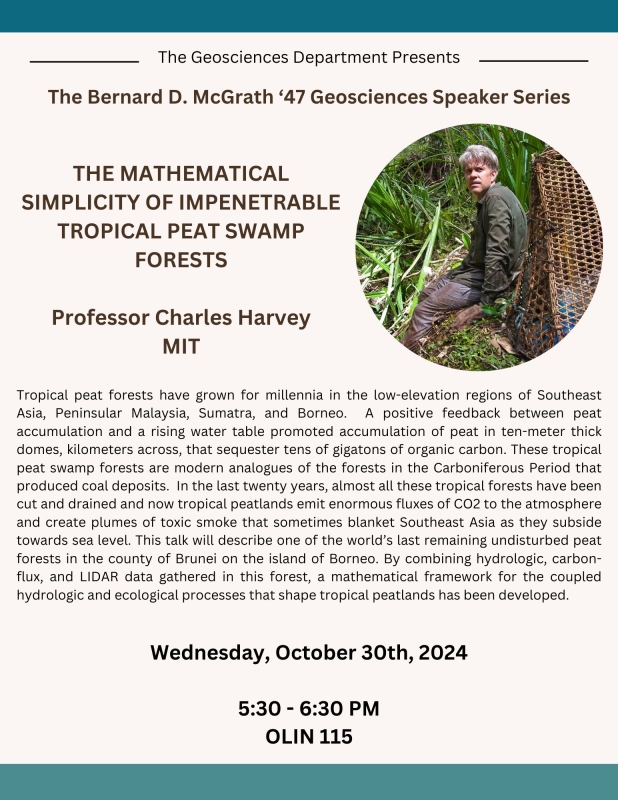Tropical peat forests have grown for millennia in the low-elevation regions of Southeast Asia,
Peninsular Malaysia, Sumatra, and Borneo. A positive feedback between peat accumulation and a
rising water table promoted accumulation of peat in ten-meter thick domes, kilometers across, that
sequester tens of gigatons of organic carbon. These tropical peat swamp forests are modern
analogues of the forests in the Carboniferous Period that produced coal deposits. In the last twenty
years, almost all these tropical forests have been cut and drained and now tropical peatlands emit
enormous fluxes of CO2 to the atmosphere and create plumes of toxic smoke that sometimes
blanket Southeast Asia as they subside towards sea level.
I will describe one of the world’s last remaining undisturbed peat forests in the county of Brunei on
the island of Borneo. By combining hydrologic, carbon-flux, and LIDAR data gathered in this forest,
we developed a mathematical framework for the coupled hydrologic and ecological processes that
shape tropical peatlands. Model simulations and data agree that the peat ecosystem has
approached an equilibrium over five millennia such that: (1) Carbon emissions and photosynthetic
uptake balance throughout the landscape; (2) The water table responds uniformly to rainstorms
across the landscape, and; (3) The topographic curvature of the land surface is described by a
spatially uniform Laplacian value that is predicted by rainfall statistics. We test this model by
reconstructing paleo-surfaces from peat radiocarbon dates and simulating the development of these
surfaces with a numerical model of peat forest dynamics driven by reconstructed paleo-rainfall.
We find that peatlands reach their ultimate shape first at the edges of peat domes where they are
bounded by rivers, so that the rate of carbon uptake accompanying their growth is proportional to the
area of the still-growing dome interior. We use this model to study how tropical peatland carbon
storage and fluxes are controlled by changes in climate, sea level, and drainage networks. We
find that fluctuations in net precipitation on timescales from hours to years can reduce long-term peat
accumulation. Finally, we apply our mathematical model to propose infrastructure design (canals
and roads) that would reduce drainage and hence the rate of peatland loss.
Geosciences Department
